Kestrel Banding Field Trip
Written and photographed by David Douglas
We traveled to the Buena Vista Wildlife area near Plover, Wisconsin, to observe American kestrel chick banding with the Natural Resources Foundation of Wisconsin. The trip is Trip 90-A in the guide book.
As usual it was another great trip and we learned much about bird banding and the American kestrel. The chicks are monitored so that they are not too young or old for banding. Adults are sometimes captured to assess their health as well. We traveled as a group down a rural road on the wildlife area and began checking the nest boxes. The photos below show some highlights. Enjoy!
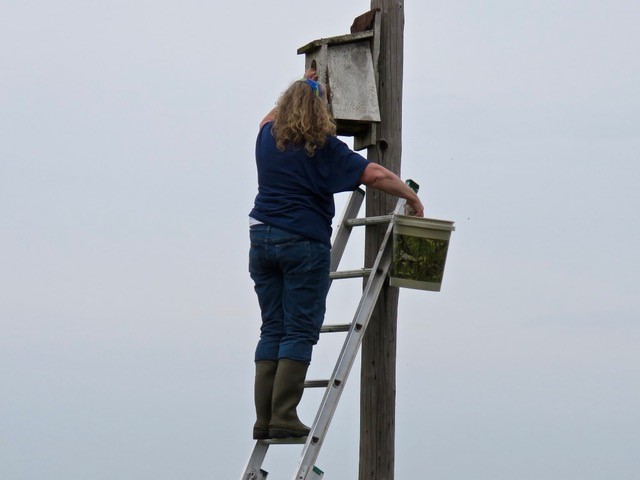
The side of the nest box is opened and the downy chicks are taken out of the side of the box and placed in the plastic pail for evaluation on the ground.
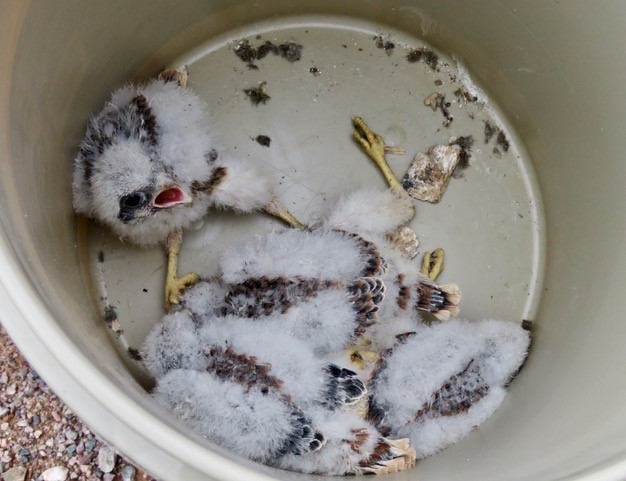
This nest box had five chicks. One was particularly vocal, but they were all calm.
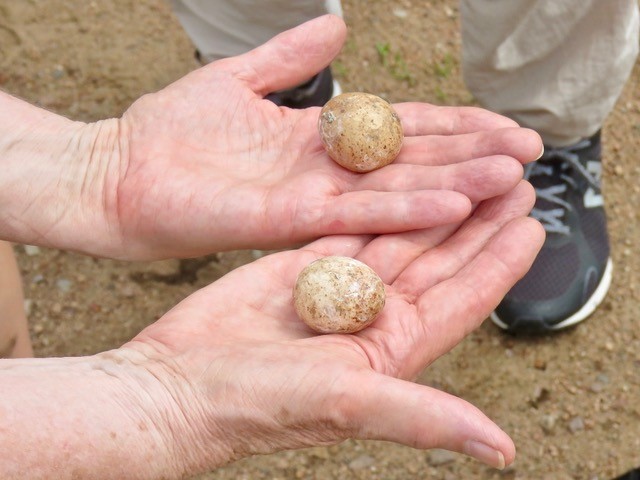
This photo shows the typical size and coloration of kestrel eggs. These eggs were probably not fertilized and never hatched.
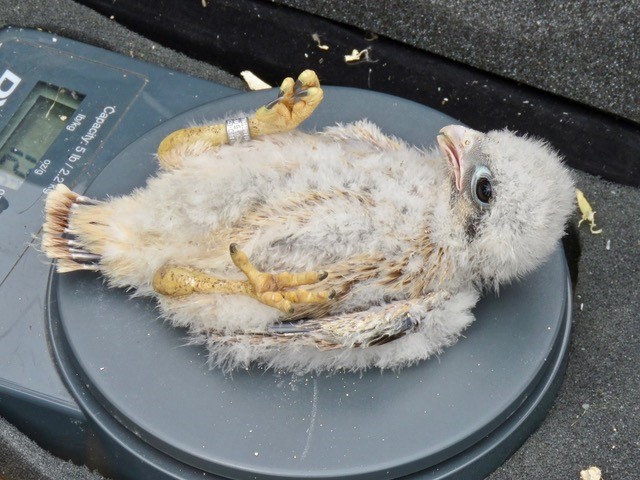
Each chick is weighed and checked over.
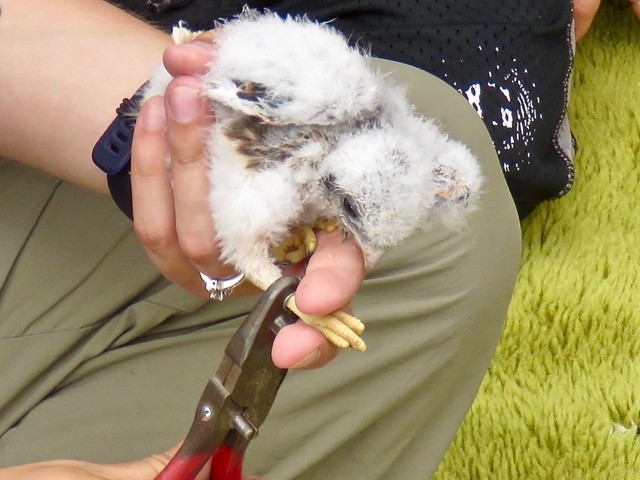
Placing the aluminum numbered leg band. These numbers are sent to a national register in Denver. Some of the birds banded in this area have been found later in this same area, but also in other parts of the country.
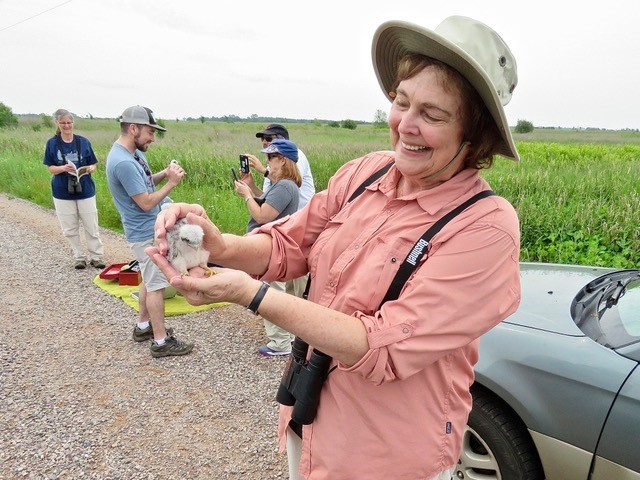
Each participant got to hold a chick.
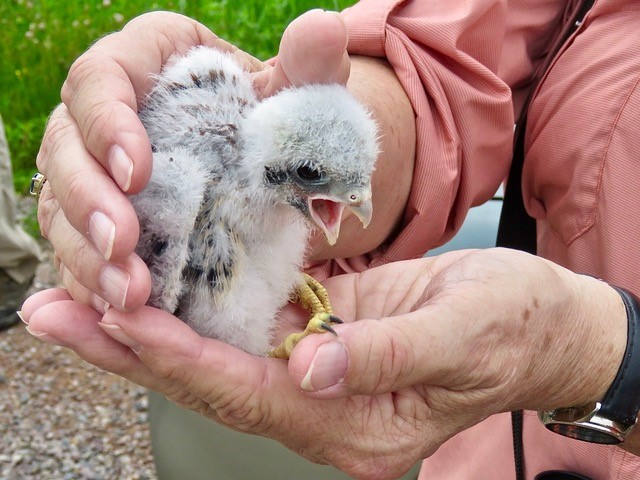
This little one had a lot to say about the whole experience.
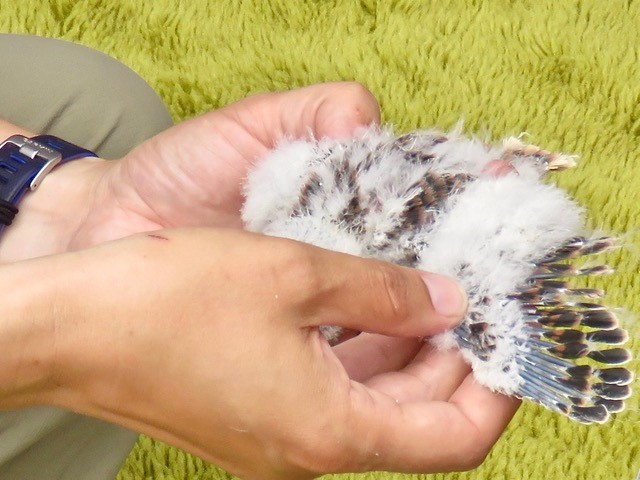
Female kestrels, like this chick, have brown primary feathers.
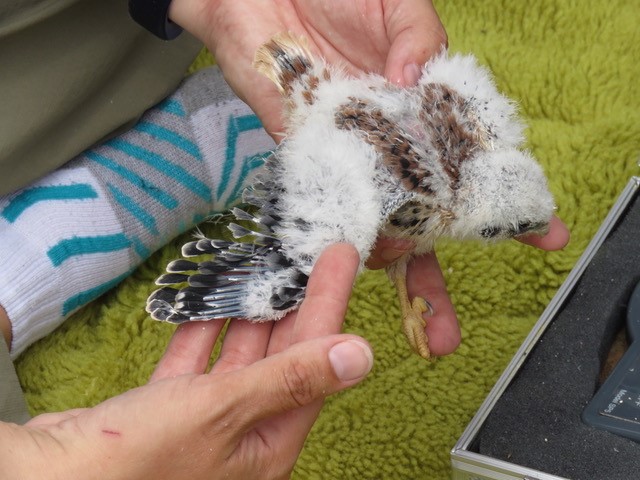
Male chicks have blue primary feathers.
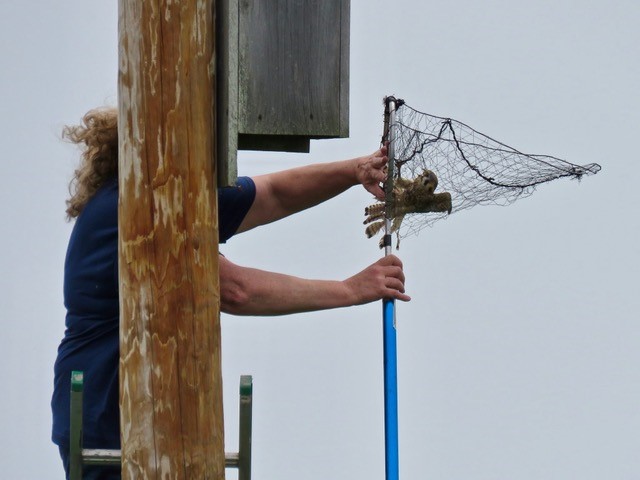
Capturing the adult female as she leaves the nest box.
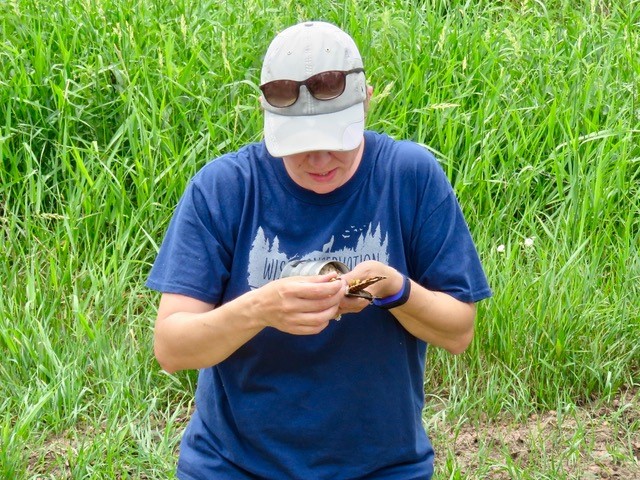
The adult bird is gently placed in an aluminum can to keep her calm and uninjured. Her leg band is read and it turns out she was banded in this area previously.
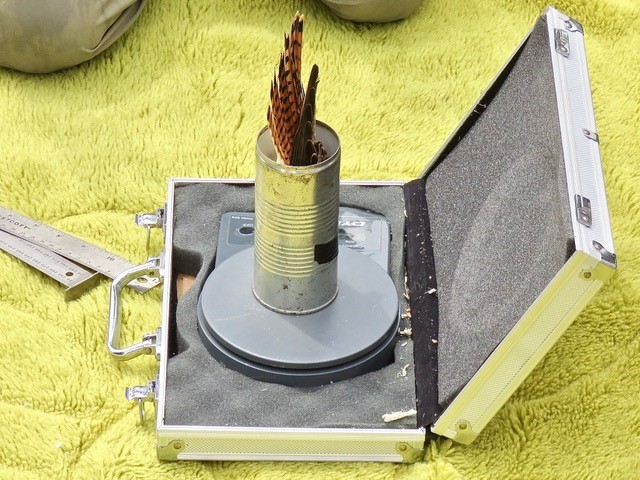
Once the bird is calm, she can be placed on the scale and weighed. She weighed less than her chicks, which is typical for these birds.
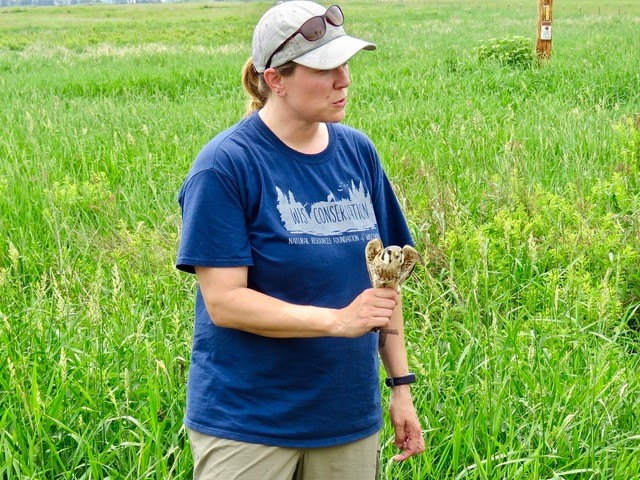
Our leader demonstrates how to safely and gently hold an adult kestrel.
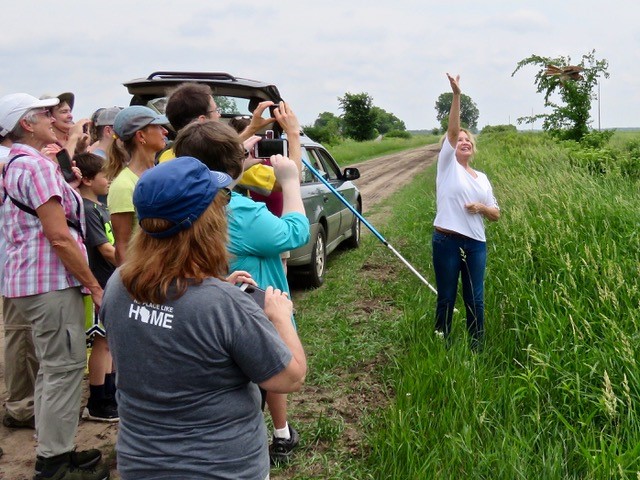
Releasing the adult female kestrel (you can see her in the top right corner blending in with the tree in the background). She flew off unharmed and stayed in the area. The male sat on a power line nearby with a mouse in his bill, possibly to feed the chicks.
